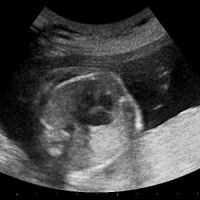Artificial intelligence (AI) and machine learning are poised to influence nearly every aspect of the human condition, and cardiology is not an exception to this trend. In this digital age, physicians are being inundated with data requiring more sophisticated interpretation while being expected to perform more efficiently. The promise of AI in cardiology is to provide a set of tools to augment and extend the effectiveness of the cardiologist, according to a review published in Journal of the American College of Cardiology.
Machine learning solutions, the journal article says, can enhance every stage of patient care — from research and discovery to diagnosis to selection of therapy. As a result, clinical practice will become "more efficient, more convenient, more personalised, and more effective."
Physicians have long needed to identify, quantify, and interpret relationships among variables to improve patient care. AI and machine learning comprise a variety of methods that allow computers to do just this, by algorithmically learning efficient representations of data. The article notes, "AI emerged because more familiar algorithms can often be improved on for real-world tasks."
Machine learning algorithms are typically used without making so many assumptions of the underlying data. The typical machine learning workflow begins with data acquisition, proceeds to feature engineering and then to algorithm selection and model development, and finally results in model evaluation and application. Although this approach hinders the possibility for traditional statistical inference, it results in algorithms that generally are more accurate for prediction and classification. Thus, cardiovascular medicine can benefit from the incorporation of AI and machine learning, the article says.
Machine learning strategies can be broadly split into either unsupervised or supervised learning. These have different goals. Unsupervised learning focuses on discovering underlying structure or relationships among variables in a dataset, whereas supervised learning often involves classification of an observation into one or more categories or outcomes (e.g., “Does this electrocardiogram represent sinus rhythm or ventricular fibrillation?”). Supervised learning thus requires a dataset with predictor variables (“features” in machine learning parlance) and labelled outcomes.
"Deep learning" is included as an unsupervised learning method; however, many of the most notable applications of deep learning are those that use features learned using deep neural networks as inputs to supervised learning models. One of the most promising uses of unsupervised learning methods for cardiology is subtyping or “precision phenotyping” of cardiovascular disease.
In cardiology, most diseases are slow, heterogeneous, multimorbid, chronic processes where pathogenesis may begin decades before any ultimate disease manifestation. This is compounded by the issue that many disease concepts in cardiology such as heart failure or coronary artery disease are somewhat broadly defined and may be arrived at by different pathophysiological mechanisms.
"Unsupervised learning allows us to enable precision cardiology by learning subtypes of monolithic disease concepts, and we envision ultimately it will help to treat these subtypes differently and thus lead to improved outcomes," write the article authors.
To emphasise its point that cardiology is ripe for the application of unsupervised learning, the article cites the following studies:
- Li et al. combined electronic health records with genetic data from a health system biobank to study type 2 diabetes mellitus. An unsupervised learning technique called topological data analysis revealed the presence of three distinct subtypes of type 2 diabetes.
- Katz et al. and Shah and Ho et al. published a series of papers using various clustering techniques to identify disease subtypes of heart failure with preserved ejection fraction.
The incorporation of AI into cardiology is not something that clinicians should fear, but is instead a change that should be embraced. "AI will drive improved patient care because physicians will be able to interpret more data in greater depth than ever before," the article explains. "Reinforcement learning algorithms will become companion physician aids, unobtrusively assisting physicians and streamlining clinical care."
Image Credit: Pixabay
References:
Johnson KW, Soto JT, Glicksberg BS et al. (2018) Artificial Intelligence in Cardiology. J Am Coll Cardiol 71:23 Pages 2668-2679. https://doi.org/10.1016/j.jacc.2018.03.521
Latest Articles
Cardiology, Artificial Intelligence, AI
Artificial intelligence (AI) and machine learning are poised to influence nearly every aspect of the human condition, and cardiology is not an exception to this trend. In this digital age, physicians are being inundated with data requiring more sophistica



























